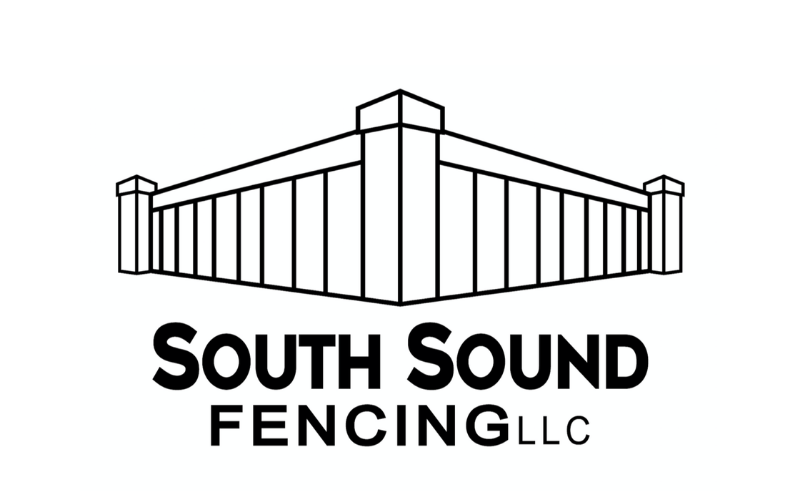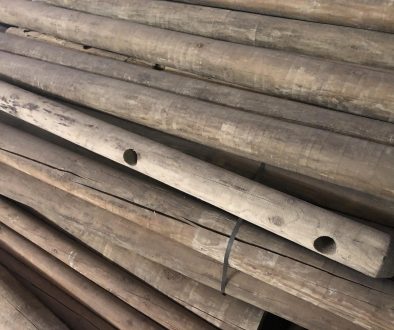Choosing the best fence post for your needs

The backbone of any fencing project is the fence post. For years, options at most hardware stores and lumber mills have been limited to treated pine, fir, or untreated cedar. But those days are over. With new materials and designs now available, homeowners have more choices than ever—along with more questions.
One of the most common questions is: “What is the best post for my project?” In this guide, we’ll break down everything you need to know to confidently choose the right post. From cost and durability to longevity and style compatibility, you’ll get a complete overview to help you make informed decisions—especially when it comes to residential fencing.
Standard Posts:
The standard fence post is one seen all across America. The 4×4 pressure treated post may be one of the most used wood products, bested only by the 2×4. Relatively low costs, durability and versatility make this a go-to option for any fencing need. These posts are typically made of pine, fir or spruce that are chemically treated to have a higher resistance to rot than bare wood.
- Cost: 14-16$
- Durability: New posts are very durable in windy conditions but their abbility to withstand strong gusts as they age typicaly leads to the inevitable faliure of the post.
- Longevity: 10-20 years (25+ years in perfect conditions)
- Versatility: Highly versatile. Wood offers endless options that metal and composite posts do not allow.
- Accessibility: Highly accessible. From big box stores to small town hardware and lumber stores, you shouldn’t have an issue finding a standard fence post.
Over all, this option can fit all needs ranging from low cost and simple fencing to highly decorative and intricate projects. The only true downfall is that wood posts begin to decay the day they are put in the ground resulting in the shortest lifespan of all the options we will cover.
True 4×4/Jumbo posts:
The Jumbo 4×4 is the bigger, stronger brother of the standard post. With the standard 4×4 measuring in at 3 1/2 inches by 3 1/2 inches you are not getting what the name implies.
With a jumbo 4×4 you are also not getting what the name implies but you are getting a treated fir, pine or spruce 4post that measures in at 4 1/8 inches by 4 1/8 inches. The added 1/2 inch may not seem like much but it makes for a significantly stronger and longer lasting post.
Cost: 16-20$
Durability: New posts are very durable in windy conditions but their ability to withstand strong gusts as they age typically leads to the inevitable failure of the post. The added width will allow your post to preform at the higher end of its range for a longer time than a thinner standard post.
Longevity: 15-25 years (30+ in perfect conditions)
Versatility: Highly versatile. Wood offers endless options that metal and composite posts do not allow. Also the added width of the working surface of the post allows for added options of fencing styles that standard post may not accommodate.
Accessibility: May be limited due to location and access to to non common lumber sizes. Not commonly carried in big box stores.
Over all, again all wood posts have the downfall of decay but having all of the benefits with added life makes this post a top contender for wood options. Availability may become a roadblock but a few phone calls before planning your project may widen your options.
Cedar posts:
If you’re looking for a wood option that doesn’t have that dark stained look you find with pressure treated lumber, look no further. Cedar posts are a very aesthetically pleasing alternative to the traditional posts. Natural insect and rot resistance allows for not only added life of the posts but also gives you the choice to keep your colors and styles natural.
Cost: 25-30$ (This price is for Washington state. Price and availability may vary in other locations)
Durability: New posts are very durable in windy conditions but their ability to withstand strong gusts as they age typically leads to the inevitable failure of the post.
Longevity: 15-25 years (30+ years in perfect conditions)
Versatility: Highly versatile. Wood offers endless options that metal and composite posts do not allow
Accessibility: In the northwest and across the north accessibility will be nearly guaranteed. Across the south and the east you may find cedar posts more difficult to locate and if you do there is a chance they will be listed at a higher price.
All in all, a cedar post can be a game changer as far as style and the looks of your fence. On top of that, its added longevity compared to treated posts of the same size may also be what brings you to considering cedar when sourcing materials. It comes at a higher price but for some the added benefits will be well worth it.
Master Halco Postmaster
The Master Halco Postmaster is a newer option that allows a homeowner or a business owner to have piece at mind due to the posts being made of 1/8 inch thick galvanized structural steel. Unlike the metal tube posts of the past, these new posts are pressed into a very rigid channeled shape with flanges on either side to accept wooden fence rails without the need for brackets of any other fasteners aside from screws. Their inline shape makes them easy to hide, allowing you to keep up the natural wood look with the strength and longevity of steel. Most steel post options may still require wood posts for gates and corners but recently Master Halco has solved this issue with their new corner posts that allow for a confident connection and their new black powder coated gate posts.
Cost: 32$
Durability: Master Halco claims that the Post Master fence post is rated for wind up to 70 MPH, far surpassing wood options and a bit higher then most other steel options.
Longevity: All their posts come with a 15 year limited lifetime warranty. That being said, there is no reason to not expect 40+ years out of these posts if properly installed.
Versatility: What it gains in longevity it loses in versatility. These posts can accommodate most fencing styles but not all. For the average american, you can most likely find a style that suits your property perfectly.
Accessibility: These posts can be found in most Home Depot’s and Lowes but also in many lumber yards that carry other fencing materials. I have yet to see the corner and gate posts in stores but I’m sure it is a product that could be ordered and delivered in store.
At the end of the day, steel posts are the go to for longevity and resistance to wind. they provide a sense of security that cannot be found in the other wood options. Master Halco has designed their posts to be very user friendly and accommodating. A bit more cost up front but I’m confident they will pay for themselves with the savings in repairs down the line.
Economy Fence
Honorable mentions.
The availabilty of options for wood posts does not stop at the common 4×4. You can upgrade to 6×6 posts and if you really want a fence your grand kids may one day see you could even go up to 8×8. while these options are available they come a much higher cost and some find them to be unsightly. Build correctly and designed well, they can be both easy on the eyes and long lasting giving you an all around option for the wood side of fencing.
Z post: A steel alternative to the Post Master. Though it offers all the benefits of steel posts they do not measure to the same design quality. The main issue being that one of the two fence rails meeting in a corner must be attached into the end grain of the 2×4. Attaching into end grain typically results in connections that prematurely fail due to the fact that the wood fibers are less likely to retain fasteners. The posts can be used as gate posts but they do limit the style and shape of hinge and latch that can be used.
Wooden posts may bend, twist, warp or crack over time as they are subjected to weather or while going through their natural drying process. This can result in less than desired results in the month and years after the initial installation of the fence.
That being said, there are a few tips to keep in mind when picking out lumber for your project. First of all, try to avoid large knots of any kind. Even tight knots (knots that are not loose) can become an issue as drying occurs. Small knots spaced throughout a piece of wood typically wont put up much of a fight but the large knots and large pockets of knots can become problematic.
Make sure that if you are buying “green” lumber (has not been air or kiln dried) that you don’t allow it sit in the sun for prolonged periods of time (multiple days or weeks). The heat from the sun can cause it to rapidly dry resulting in bent and bowed lumber. During summer months warping and cracking can occur in an afternoon if wood is left in the back of a truck or in the lawn.
At the end of the day, it all depends on your budget and style preference. If you plan on doing the job yourself, make sure you are properly educated because even minor mistakes can end up costing you a lot of money.
If you are looking for a team of fence installation professionals that have experience building fences for residential, commercial, and industrial properties we would be happy to assist you with your next fencing project. Give us a call or email today.

